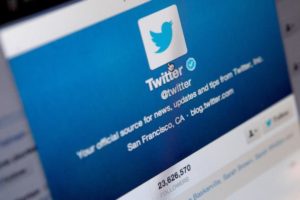It seems as if Silicon Valley could use some color because tech giants like Twitter, Facebook and Google all have stark contrasts in its employee demographics.
According to a 2014 Equal Employment Opportunity report, Black people represent a mere 1.7 percent of American staff members at Twitter. With a workforce of nearly 3,000, only 35 men and 14 women are Black. The report claims 93.8 percent of Twitter employees were either white or Asian.
The findings come as a shock after Janet Van Huysse, Twitter’s vice president of diversity and inclusion, said, “We are committed to making inclusiveness a cornerstone of our culture,” in a blog post last year.
To those wondering who uses Twitter, numbers from Pew Center Research revealed that Black people actually use Twitter more than white people. According to data, 27 percent of users are Black, 25 percent are Hispanic, and 21 percent are white.
The Rev. Jesse Jackson, president of the Rainbow/Push Coalition, expressed his disappointment with tech companies and their constant lack of progress in employment diversity. He said, “Black people are greater users of the product and capable of doing the jobs, but there has not been an adequate commitment to hire, train and maintain Black people.”
Twitter officials know the company benefits greatly from minorities in ad revenue. The company even hired a “multicultural strategist,” Nadia Santamaria, to help advertisers directly target minority groups.
In a recent article, Santamaria said, “Advertisers know that multicultural consumers are over-indexing on mobile use and digital video consumption. They need to be able to focus on these consumer groups to be successful today. That is an important focus for advertisers, and by default has to become an important focus for Twitter as well.”
In addition to a severe lack of cultural diversity at Twitter, there is also a large gender profile gap — 70 percent of all employees are male. A new EEO report will be filed again later this year with hopes the company has improved its “inclusiveness” challenge.
Twitter has shown to be an essential tool in the recent “Black Lives Matter” movement as activists and demonstrators express their outrage and share news, spreading information about issues in Baltimore and, lately, the shooting massacre in Charleston, South Carolina. The site has a growing community known as “Black Twitter.”
Across Silicon Valley, the lack of multicultural employment is just as dismal. At Facebook, only two percent of employees are Black. Google also has a tiny two percent representation of Black people at its U.S. workforce.
“They hire people they know, they trust, and like. We’re not in that circle,” Jackson said.



